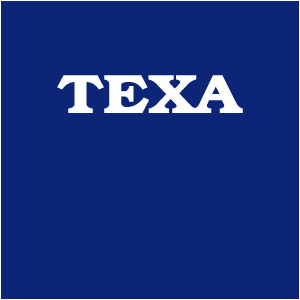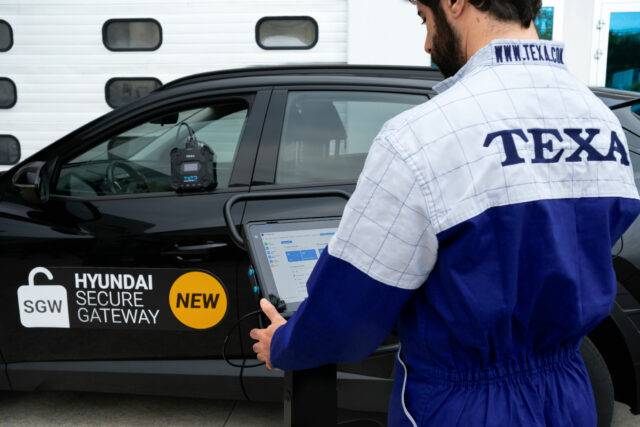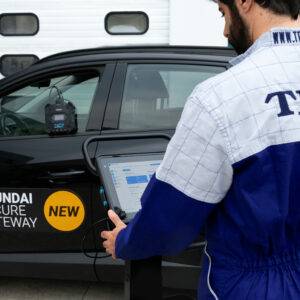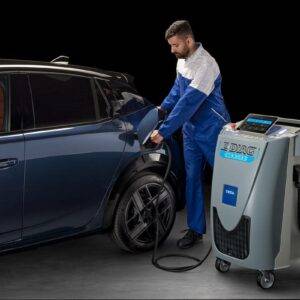PASS-THRU
Standardized ECU reprogramming interfaces
FAQ:
- The PASS-THRU regulations J2534 and ISO22900 define the standard reprogramming interfaces of the ECUs (vehicle control units), as to the SW and HW components, required by the European legislation starting form Euro V for light vehicles and from Euro VI for commercial vehicles.
- In general manufacturers are obliged to supply both the documentary information and the information for maintenance and repair that can be obtained with the OBD technology.
Why is standardization important?
- The regulation forces car equipment manufacturers to comply with two types of standards: SAE J2534 or ISO 22900. When manufacturers declare compatibility with these standards, the detail of the standard referred to must be specified
- The standard wants to give workshops the possibility of having just one VCI (Vehicle Communication Interface i.e. as same of NAVIGATOR line) that can be used by the various software of car manufacturers to communicate/reprogram the vehicle ECUs. This way third party’s VCIs and not just the car manufacturer’s official VCIs can be purchased.
- TEXA products (we refer here to as same of NAVIGATOR line interfaces) are fully compatible with J2534-1. An optional cable is required for vehicles using J2534-2 to reprogram CAN Single Wire.
- TEXA products comply also with ISO22900-1 (electrical compatibility).
- Access is controlled by the car manufacturer. It’s necessary to get authentication and accreditation and in certain cases access to higher levels for security systems (see Opel, DUNS code).
- The manufacturer provides for a cost calculated in different ways: by hour, day, week, month, year, session.
- Participation to training courses is often required in order to be able to perform the most “sensitive” reprogramming functions such as VAG, RENAULT.
- The PASS-THRU functions can be used whenever the SW of one or more ECUs must be updated due to malfunction. Without using PASS-THRU, the mechanic is forced to ask the Dealer and/or authorized workshop to intervene. With PASS-THRU this is no longer required.
NOTA: To carry out reprogramming connected to security systems (i.e. immobilizer and/or anti-theft devices), the supplier of the PASS-THRU service is authorized to ask independent mechanics for special documents such as:
- Certificate of the criminal records registry;
- Certificate of company registration as mechanic.
- PC or other display device connected to the Internet: Standard PC fitted with USB, serial, LAN, WIFI. In general all manufacturers ask for specific hardware and operating system requirements. For this reason the cover obtained by using AXONE 4 as a display unit can be limited to some manufacturers’ specific requirements
- Vehicle communication interface (VCI) supporting J2534 (1 or 2) or J22900 (1, 2 or 3), for instance such as same of NAVIGATOR line TEXA products (according to the declared technical specifications).
NOTA: The interface must be of the type approved by the specific manufacturer, some manufacturers authorize the use of non approved interfaces but in this case they do not accept responsibility for the operations carried out on the vehicle. - Manufacturer’s specific software
downloaded from the manufacturer’s website or received from the manufacturer as a CD/DVD.
Reprogramming
- The regulation provides for the possibility of reprogramming all the vehicle ECUs. In many cases this function is not recommended but compulsory (i.e. BMW checks the SW of the various ECUs and, if necessary, forces the user to update them). Reprogramming is possible also on cars without an OBD socket (see Toyota) according to the supported protocol (J2534-1 or J2534-2).
- Manufacturers make available their specific software and therefore the first difficulty the final user encounters is to know how the manufacturer’s software works. The final user must be able to select (diagnostic functions) and selection is not always clear.
Diagnosis
Euro 5 does not force to supply online diagnosis, even if some do it. Most manufacturers give the opportunity to use their software two ways. One just to reprogram, the second one allows complete diagnosis. For instance:
- Reprogramming and diagnosis : GM, Mercedes, VAG group, Toyota/Lexus
- Reprogramming only: Renault, Hyundai
- Only diagnosis: Volvo
ATTENTION:
Car manufacturers update their software and functions regularly and with time the information can change. Always refer to the manufacturer’s website for the latest information.
Information
- Information regarding vehicle ID, technical and maintenance manuals, information and data required to diagnose a component, electrical diagrams, fault codes, software calibrations and relative procedures as well as information on special repair tools and information about reprogramming J2534 or ISO22900 ECUs is normally made available (check the individual manufacturer).
In detail, to reprogram or diagnose:
- The workshop gets accreditation on the manufacturer’s website
- The mechanic installs the manufacturer’s software locally on his PC. This software is normally downloaded from the manufacturer’s website, but sometimes the CD or DVD needs to be ordered.
- The manufacturer’s software might need to be activated by specific codes provided by the manufacturer’s support department
- The workshop pays for accessing the services offered by the SW according to what it needs (day, month, session, etc.). Running costs vary according to the reference vehicle manufacturer and go from € 10/day to annual subscription costing € 5,000.
- In general the workshop accepts a disclaimer or responsibility for all the operations that will be carried out on the vehicle. The manufacturer normally refuses this kind of responsibility.
- During these phases the manufacturer’s software communicates with a central server via the Internet so the connection must be efficient. In fact the manufacturer’s server:
- Manages the access authentication information
- Checks in real time the existence of any updates to the manufacturer’s software to be installed locally
- Downloads any technical information regarding vehicle ID, components, electrical diagrams, etc. (according to what the manufacturer makes available)
- Downloads any new reprogramming maps
THE INTERNET CONNECTION IS VITAL
Care must be taken during this phase because there is direct interaction with the vehicle. In using the manufacturer’s procedures, pay the utmost attention. Some points are particularly important:
- The vehicle power supply must be constant (the POWER ASSIST electronic feeder must be used)
- The vehicle electrical system must be efficient
- The Internet connection must be stable
- The instructions supplied by the manufacturer’s software must be followed step by step
In detail, as to the information:
- Access the manufacturer’s website to get different information. There are normally various sections on the subject. For instance BMW offers dedicated DTC, diagram or technical bulletin sections. This applies to other brands too. VAG has a different paying method and access to information or to diagnosis are separate.
| NEW GENERATION VCI (CORTEX) |
| List of compatible tools: – TXT tools with a serial number starting with DNI, DNB, DNF or DNR – TXC tools with a serial number starting with DNN – TXT MULTIHUB, TXT MULTIHUB 2 |
| To Download the TEXA PASS-THRU setup: CLICK HERE |
TEXA PASS-THRU: Info and details by manufacturer
TEXA VCI tools can be used in PASS-THRU mode on all makes that have certified their use. The end user must verify that his TEXA VCI is among those certified for use on the website of the relevant manufacturer. TEXA VCI tools can also be used in PASS-THRU mode on vehicle makes for which no specific homologation is required, with the provisions given below. This information can also be obtained by consulting the website of the relevant manufacturer. When there is no homologation procedure for certifying the complete compatibility of the manufacturer’s diagnostic system with a TEXA VCI used in Pass-Thru mode, TEXA S.p.A. does not guarantee that the VCI will function correctly and cannot therefore be held responsible for partial or complete malfunctioning of the functions concerned. In PASS-THRU mode, TEXA VCI tools cannot be used to solve faults associated with special features of vehicle manufacturers’ proprietary diagnostic systems not conforming to standard J2534-1/2. The end user must be aware of this and must accept full responsibility for any problems on a vehicle or in electronic devices on which he performs diagnostic and/or programming operations with a TEXA VCI. TEXA S.p.A. cannot be held responsible for problems, direct or indirect damage, costs or malfunctions in the vehicle or parts of the vehicle, appearing after or as a result of using a TEXA VCI in PASS-THRU mode.




